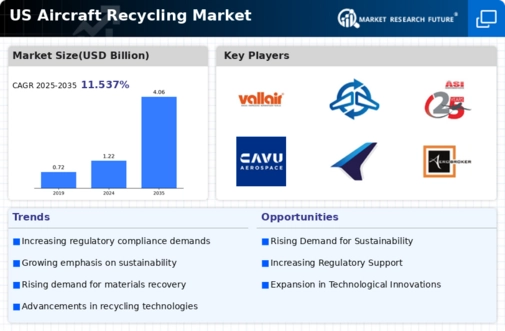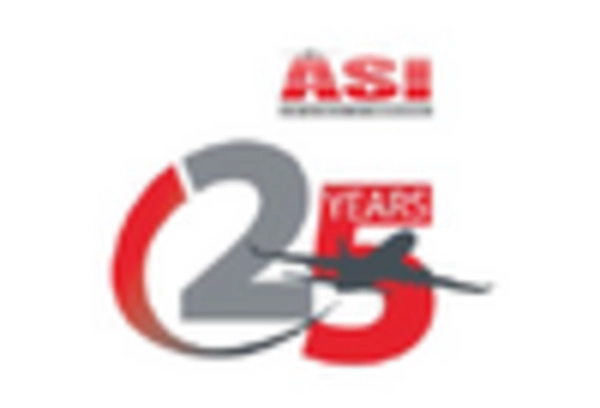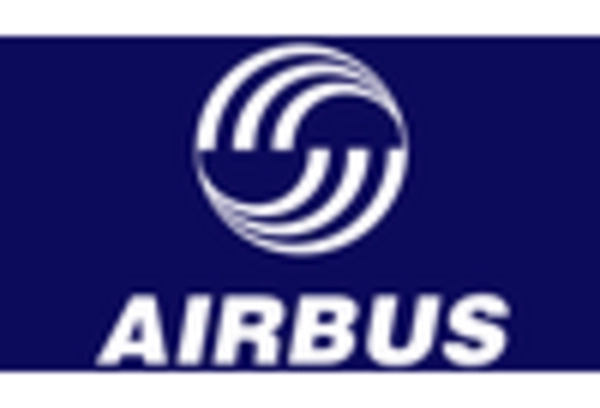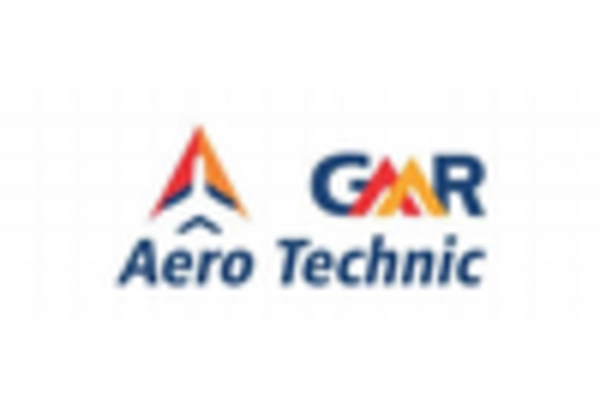Rising Costs of Raw Materials
The aircraft recycling market is influenced by the rising costs of raw materials, which have surged in recent years. As the prices of metals and other materials continue to escalate, the economic viability of recycling aircraft becomes more attractive. The aircraft recycling market stands to gain from this trend, as recycled materials can often be sourced at a lower cost compared to newly mined resources. In 2025, the market is expected to see an increase in demand for recycled aluminum and titanium, which are critical components in aircraft manufacturing. This shift not only supports the recycling industry but also contributes to a more sustainable supply chain.
Increasing Regulatory Pressure
The aircraft recycling market is experiencing heightened regulatory pressure aimed at promoting environmentally responsible practices. Governments are implementing stricter regulations regarding waste management and recycling, compelling airlines and manufacturers to adopt more sustainable disposal methods. In the US, the Federal Aviation Administration (FAA) has introduced guidelines that encourage the recycling of aircraft components. This regulatory landscape is likely to drive growth in the aircraft recycling market, as compliance becomes essential for operational continuity. Companies that proactively engage in recycling initiatives may find themselves at a competitive advantage, positioning themselves favorably in a market that increasingly values sustainability.
Expansion of the Aviation Sector
The expansion of the aviation sector in the US is a significant driver for the aircraft recycling market. As air travel continues to grow, the number of aircraft reaching the end of their operational life is also increasing. This trend is expected to result in a higher volume of aircraft entering the recycling phase, thereby boosting the aircraft recycling market. Projections indicate that by 2025, the number of retired aircraft could rise by 15%, creating a substantial opportunity for recycling firms. This influx of decommissioned aircraft not only supports the recycling market but also emphasizes the need for efficient and sustainable disposal methods.
Growing Demand for Sustainable Practices
The increasing emphasis on sustainability within the aviation sector appears to drive the aircraft recycling market. Airlines and manufacturers are under pressure to adopt environmentally friendly practices, which includes the responsible disposal of aircraft. As of 2025, the aircraft recycling market is projected to grow at a CAGR of approximately 5.5%, reflecting a shift towards circular economy principles. This trend is likely to encourage stakeholders to invest in recycling technologies and processes that minimize waste and maximize resource recovery. The aircraft recycling market is thus positioned to benefit from this growing demand for sustainable practices, as companies seek to enhance their environmental credentials and comply with evolving regulations.
Technological Innovations in Recycling Processes
Technological advancements in recycling processes are reshaping the aircraft recycling market. Innovations such as automated dismantling systems and advanced material separation techniques are enhancing efficiency and reducing costs. These technologies enable the aircraft recycling market to recover a higher percentage of valuable materials from decommissioned aircraft. As of November 2025, it is estimated that these innovations could increase recovery rates by up to 30%, making recycling more economically viable. The integration of technology not only streamlines operations but also aligns with the industry's sustainability goals, potentially attracting more investment and interest from stakeholders.

















Leave a Comment